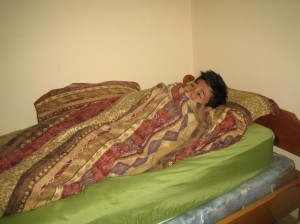It is important to note that cellulitis is a bacterial infection of the skin and underlying tissues. This type of infection can occur on any part of the body, but quite common in the lower legs. Young children are susceptible to develop the infection under an eyelid which is a condition called as periorbital cellulitis. Remember that cellulitis is a serious condition and if left untreated, can be potentially life-threatening since it spreads quickly. Nevertheless, with prompt medical care, infant cellulitis can be easily managed.
What are the causes?
A baby develops cellulitis once an infectious bacterium such as streptococcus or staphylococcus enters beneath the skin via an open wound. Cracked, dry or peeling skin, insect bites, skin injuries, animal scratches and even chicken pox are all linked with the development of cellulitis among babies. A chalazion or sty as well as injuries to the eyelid or skin surrounding the eye can lead to the development of periorbital cellulitis. In addition, infants with a weakened immune system face a higher risk for the infection.

What are the symptoms?
An area of swollen, reddened skin that often feels warm to the touch is a classic symptom of cellulitis. The infant can cringe if the area is touched, indicating that it is painful or tender. Take note that cellulitis can oftentimes cause chills, fever and sweating.
An infant below 3 months of age with a temperature of 100.4 degrees F or higher should be treated as a medical emergency. Other symptoms of infant cellulitis include the following:
- Drowsiness
- Fussiness
- Rash or sore that may or may not ooze pus
- Skin appears tight
- Vomiting
If the eye is affected, it can also trigger a runny nose or conjunctivitis which is otherwise called as pink eye.
Treatment
As long as infant cellulitis is treated early, it can be managed with a course of oral antibiotics. The standard treatment usually lasts for 7-10 days. In some cases, the baby might require administration of intravenous antibiotics. Follow-up checkup with the doctor is required within a few days to check if the medications are working and another one after the course of antibiotics to ensure that the infection is completely eliminated.
The symptoms typically start to clear up within 2-3 days after starting antibiotics. When managing the symptoms at home, keep the child as calm and quiet as possible during treatment. Try to keep the affected area elevated and clean as well as protect any open wounds. Always wash hands using warm water and antibacterial soap before and after handling the child.
Preventive measures
You have to actively care for any patches of dry skin on the baby. Make sure that a moisturizer recommended by the doctor is used and use a humidifier if the air is dry. Any rashes should be treated right away and trim the fingernails.
Any wounds should be cared for by washing with warm water and soap. After washing, apply a topical antibiotic. Open wounds can be protected by applying bandages. Any injuries should be monitored closely for indications of infection such as inflammation, redness, drainage of pus and warmth. Seek treatment for any possible infection right away. If there are pets around, keep them away from the baby.
